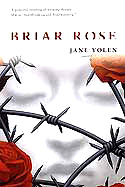Jane's relationship with Rochester has been an interesting one from the beginning. There was, like in fairy tales, a sense of social barriers estricting them from having the relationship they wanted. However, in Jane Eyre the barriers they faced were much stronger than any I have seen in the fairy tales thus far.
The first encounter between Jane and Rochester took place during Jane's trip to town. Rochester who was on his horse has hurt his ankle and falls to Jane's level, who was walking in the same area as the dog. Even during their first encounter there was a social difference between the two. Rochester wouldn't allow Jane to help him because she is a
governess and she is a woman, meaning that she is not his social equal. However, there is Blanche Ingram (equivalent to stepsisters in Cinderella), who pine for Rochester's attention and feel as though it is rightfully theirs do to their social status, however do not end up with him. Ingram constantly puts Jane down just as the stepsisters do to Cinderella out of jealousy and fear. However, like the evil stepmother (Mrs. Reed), Jane must overcome Ingram's attempts to discourage her and Rochester's relationship.
However, as the novel continues Rochester's affections grow towards Jane causing him to run to Jane when in need of help multiple times. For example, when Rochester is in need of
assistance with Mason he runs to Jane instead of his social equal Colonel Bent. Showing that Rochester is ditching what is considered to be socially acceptable. He dumps the idea of being with Ingram, admitting to Jane it was to make her jealous, and
pursues Jane. Jane accepts the engagement, however their wedding is broken off when she finds out who the woman in the attic really is. She leaves and spends time with her cousins where she learns she has inherited money, raising her social status. Rochester ends up blind and handicapped, however she goes back to him feeling as though they can finally be together with out her feeling
inadequate. Jane must defeat the stepmother and sister characters, and gain something in order to be Rochester's social equal.
-Nicole


